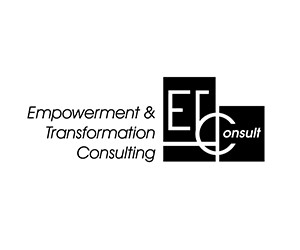Do you want to know how the Mining Charter’s implementation guidelines will impact mining suppliers?
The Mining Charter and Implementation Guidelines 2018
The Mining Charter 2018 was released in September while the implementation guidelines were released in December. The timing of the implementation guidelines coincided with the end of 2018 and for some companies, financial year end. Naturally, this meant very little time to structure a BEE strategy.
However, the deadline for the implementation of the guideline’s looms; leaving many suppliers to mining companies scrambling for understanding and a way forward.
According to the legislation, both the Mining Charter and the implementation guidelines must be read together. With both documents combined, its sure to be a legislative novel featuring ambiguous formulae and plenty tables. If you’re accustomed to lengthy legislature this should be a breeze. However, if you would like to jump straight to how these guidelines affect you, your BEE status and how to ensure you remain competitive – our team of experts have simplified the guidelines for you.
Main Message of the Mining Charter 2018 and Implementation Guidelines
While the Charter outlines and discusses how mining holders should align their transformation strategies; with the intended outcome of combating the perils of Apartheid and transforming South Africa. The guidelines make no mention of new requirements for mining holders. Rather, the focus is put on the procedures, processes and submission templates that deal with compliance in the mining industry.
The bottom line is that mining suppliers with a BEE status below level 5 will be seen as non-compliant. This will put in motion an unfortunate turn of events, affecting the BEE status of the mining holder and ultimately the mining supplier’s income.
So, what are the guidelines? See below for a breakdown of the final procurement for mining companies, ownership and local content – in respect to suppliers of mining companies.
The Implementation Guidelines that Affect Mining Suppliers
The following guidelines affect mining suppliers and are explained:
- Final procurement targets
- Key ownership for mining suppliers
- Key local content
Final Procurement Targets – including goods and services
From the total amount of mining goods procured, a minimum of 70% must be spent on South African manufactured goods. These are defined as goods with at least 60% local content during manufacturing or assembly. The 70% is broken up as detailed below:
- 44% on manufactured goods by BEE compliant companies
- 21% on manufactured goods produced by Historically Disadvantage Persons Owned and Controlled Companies (HDPs)
- 5% on manufactured goods produced by a woman or youth-owned and controlled company
When it comes to mining services, the guidelines state that a minimum of 80% of the total spend on services must be sourced from South African based companies. The 80% is broken up as detailed below:
- 50% on services supplied by HDPs
- 15% on services supplied by women owned and controlled companies
- 10% on services supplied by BEE compliant companies
- 5% on services supplied by youth
Key Ownership for Mining Suppliers
- According to the DTI’s BEE Code of Good Practice, a BEE compliant company is a company that has achieved level 4 status; including at least 25% + 1 ownership vote by HDPs
- 51% of black-owned mining suppliers will not qualify as HDP owned and controlled companies; if they make use of modified flow-through
- As seen above, the targets for services procurement spend are high for HDP owned and controlled companies; therefore, mining suppliers will feel the pressure to achieve a 51% HDP ownership and control
- In addition, there are precise targets for procurement from both woman and youth owned and controlled companies
Key Local Content
- A South African based company is defined as a company that is registered in the Republic of South Africa, with operations in South Africa
- Local content must be certified by a minister approved body or SABS
- Local content will be on a goods line as opposed to a companywide line
- Lastly, the calculation of local content will exclude intangible value and profit mark up but will include manufacturing and assembly
Conclusion of Mining Charter Implementation Guidelines
There’s no point in denying the fundamental place the Mining industry holds in South Africa’s welfare. Therefore, the successful implementation of these guidelines is vital.
If you want to read the complete Mining Charter 2018 and the Implementation Guidelines – you can view it on the Department of Trade and Industry website. However, if you would like to know how ET Consult can help you implement these guidelines and get you the BEE points you need to maintain or improve your BEE status – get in touch with us today.
The deadline for the implementation of these guidelines was 01 March 2019. Find out how ET Consult can help you gain and maintain your BEE status level in this financial year; whilst creating opportunities for growth.
About ET Consult
ET Consult specialises in sustainable empowerment and transformation strategies. They are a team of passionate, dedicated professionals committed to social transformation. Operating across South Africa, ET Consult turns compliance into success by changing the perception of B-BBEE and focusing on the success stories that emerge from sustainable and correct B-BBEE implementation.
Contact ET Consult today for tailored empowerment and transformation solutions
www.etconsult.co.za| info@etconsult.co.za| 087-720-1280







